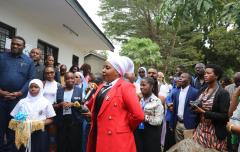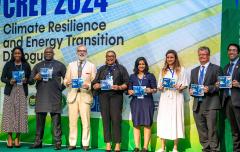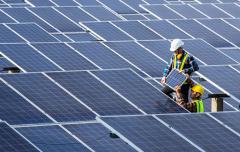Clean Energy for Health Care conference sparks new thinking around intersection of global health and energy goals
Vital health care services are dependent on reliable energy access. This simple fact means advancing human well-being, especially in developing countries, hinges on improved energy access.
This was the prevailing theme when more than one hundred experts and practitioners from the world’s health care and energy communities convened in Nairobi for the two-day Clean Energy for Health Care conference last month, hosted by the UN Foundation, Sustainable Energy for All (SEforALL) and partners.
Midwives met solar energy experts, ministers spoke with doctors, and development professionals talked to members of the private sector.
These much-needed conversations across siloes marked a major step forward in bringing awareness to the intersection of Sustainable Development Goal 7 (SDG7): Affordable, reliable, sustainable and modern energy for all by 2030 – and SDG3: Ensuring healthy lives and promoting well-being for all at all ages. Much of this focus was directed towards the role clean energy can play in supporting stronger and more resilient health systems, especially in Africa.
One of the conference’s key takeaways was that off-grid solar photovoltaic (PV) systems must play a pivotal role in powering rural health centers. This was highlighted by a report developed by UN Foundation and SEforALL - with support from the UK Department for International Development and Catalyst Off-Grid Advisors – that was launched during the conference.
The report, Lasting Impact: Sustainable Off-Grid Solar Delivery Models to Power Health and Education shows that many unelectrified health institutions are in remote areas that are characterized by poor surrounding infrastructure and low energy demand, making them unattractive to traditional energy service providers. Thus, off-grid solar PV power systems present a key opportunity.
Meanwhile, a growing number of standalone solar systems are being installed in health and education facilities in low- and middle-income countries, but many of these systems prematurely fail or underperform, leading to the perception that renewable technologies are too new and unreliable to continuously serve the needs of communities.
Lasting Impact evaluates different delivery models for deploying solar PV systems in public health and education facilities in resource-constrained settings from the perspective of how the models contribute to – and, likewise, hinder – sustainability. In doing so, the report provides guidance to decision-makers on appropriate delivery models for their own country-specific contexts.
“To achieve SDG3 and SDG7 by 2030, we need rapid progress in bringing power to health care facilities, especially in developing countries,” said Glenn Pearce-Oroz, Director of Policy and Programs at SEforALL. “The Lasting Impact report punctuates the importance of electrification strategies that harness public, private and philanthropic efforts, but with a greater focus on the operation and maintenance of solutions.”
In addition to the report release, conference sessions explored a variety of themes that are key to powering health facilities in Africa and beyond. These included a prominent role for energy efficiency measures to help manage the overall energy demands of health facilities, off-grid finance models, as well as the need for cross-sectoral planning involving cooperation at different levels of decision-making to design effective policies and programs.
The Clean Energy for Health Care Conference was organized by UN Foundation in collaboration with the World Health Organization, SEforALL, UN Development Programme, International Renewable Energy Agency (IRENA), UK Department for International Development (DFID), and the World Bank’s Energy Sector Management Assistance Program (ESMAP).
Read the full Lasting Impact report here.
For any media requests, please email media@SEforALL.org.




